business process outsourcing
description: the practice of contracting various business-related operations to third-party vendors.
32 results

Ghost Work: How to Stop Silicon Valley From Building a New Global Underclass
by
Mary L. Gray
and
Siddharth Suri
Published 6 May 2019
People hired through contract staffing companies like Leapforce worked on EWOQ, identifying and ranking new webpages to fine-tune links between ads and users’ search queries.22 According to press accounts and people we interviewed and surveyed who work on multiple on-demand platforms, Twitter and Facebook use internal tool kits that function much like MTurk and plug VMS-provided workers into their platforms to monitor and review content.23 Kala does similar tasks on UHRS for Microsoft. Before Kala started doing ghost work on UHRS, she worked for a small company that processed back office files from a U.S. business. Her company, one of many so-called business process outsourcing (BPO) shops handling work from the United States, was located in the heart of Bangalore’s Electronic City neighborhood, not far from tourist-choked Cubbon Park.24 Perhaps it is ironic that the company’s biggest contract was with one of the oldest and largest labor organizations based in the United States.
…
This is why, in Indian cities that lack free public utilities like tap water and sewer systems, there are high-speed broadband internet infrastructure and power grids to feed technology parks. The sharp growth in readily available internet connections, combined with a native English-speaking workforce and its long history of advanced educational training centers in science and engineering, made India the first epicenter of business process outsourcing (BPO). But outsourcing was never simply about cost cutting. It was also about the growing resistance to unionization and evading long-standing labor regulations. As companies expanded their reliance on a far-flung network of contingent staff, they shrank the number of on-site, full-time employees who were eligible to collectively bargain or to push for increasing workers’ benefits.
…
He moved to Hyderabad in his early twenties to learn computer skills and basic software engineering, with the hope that getting credentialed would give him entry to the city’s booming IT sector, one of the largest in the country. As discussed in Some platforms provide guidance in the form of ratings or a reputation score, as described in chapter 2, Hyderabad was one of the first cities in India to develop infrastructure to attract multinational companies engaged in software development and business process outsourcing (BPO). The city’s well-educated and expanding middle class made it a natural location, as did the fact that Hyderabad’s residents spoke English as readily as Hindi. It was in Hyderabad that Riyaz first heard about MTurk. In need of cash, he signed up for the crowdsourcing platform. He did a range of tasks, from surveys posted by researchers to image tagging.
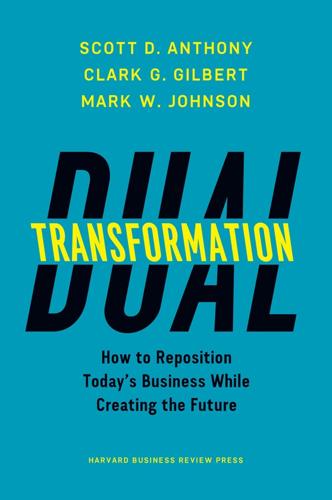
Dual Transformation: How to Reposition Today's Business While Creating the Future
by
Scott D. Anthony
and
Mark W. Johnson
Published 27 Mar 2017
But the forces of industry change are relentless. Revenues dipped from $21 billion in 2012 to $18 billion in 2015, and Xerox’s stock fell by almost 50 percent from January 2015 to January 2016. Later that year, influenced undoubtedly by pressure from activist investor Carl Icahn, Xerox announced plans to split into two companies: a business process-outsourcing company called Conduent, with 96,000 employees and $7 billion in revenue; and a copier and printer business, with 39,000 employees and $7 billion in revenue. The two offshoot businesses are individually more vibrant than either would have been a decade ago but no doubt will again confront the challenge of disruptive change in their respective markets.
…
Beyond having to deal with general trends driving down so-called snail mail, SingPost also confronted the challenge of the 2007 expiry of its exclusive licenses for receiving, collecting, and delivering postcards, which constituted a significant portion of its business. After its IPO, SingPost diversified its core business by introducing bill payment services at post offices (2005), building a direct mail business (2007), and offering mail room management and other business-process outsourcing solutions for small businesses (capabilities tied to its 2009 acquisition of Quantum Solutions, described below). To appeal to younger consumers, in 2010 it launched a business called KPO in the city’s tourism and shopping belt, integrating a trendy pub and café that is open at night and on weekends.
…
However, as criticism of his regime mounted, Mao changed course in less than a year, with critics publicly castigated and sent to prison labor camps. He later boasted that his campaign “enticed the snakes out of their lairs.” That is not good inspiration for innovation. Many of the case studies we feature in this book involve a laser focus on a handful of strategic moves. Xerox streamlined its core business and created a business-process outsourcing business. SingPost made its core postal delivery offerings more convenient and created outsourced logistics and fulfillment capabilities. Adobe shifted from selling packaged software to offering subscriptions and built a suite of offerings around marketing services. Turner Entertainment Networks had five strategic thrusts, such as increasingly producing original content and playing digital differently.

The Future of Technology
by
Tom Standage
Published 31 Aug 2005
Some companies have outsourced the work of their it departments, from managing the physical hardware to maintaining and developing business software and managing corporate computer networks. Up to half the world’s biggest companies have outsourced some it work, reckons ibm. As well as outsourcing their business systems, some companies are doing the same with the workers who operate them. This is called business-process outsourcing (bpo). First Data Corporation (fdc), for instance, will handle some or all of the administrative work involved in running a credit-card business, from dealing with applications to authorising credit limits, processing transactions, issuing cards and providing customer service. Few bank customers will have heard of the company, yet fdc employs nearly 30,000 people, who administer 417m creditcard accounts for 1,400 card issuers.
…
But others are lining up ost americans or britons would be hard pressed to name their national call-centre champions or top providers of it services. In India they are like rock stars, endlessly featured in the media. All of them claim to be hiring by the thousands every month. New business models come and go. Hero bosses such as Raman Roy, chief executive of Wipro Spectramind and “father of Indian business-process outsourcing” (an industry all of six years old), have developed the same preposterous swagger adopted by erstwhile leaders of America’s dotcom boom. Is India heading for a fall, too? India’s it industry is growing at a vertiginous rate. A dozen years ago, the entire country boasted just four or five ibm mainframe computers, says Lakshmi Narayanan, the boss of Cognizant, a big Indian it-service company.
…
Kearney 163, 189 AAAI see American Association of Artificial Intelligence ABB 287, 289 ABI Research 295, 296 Accenture 39, 118–20, 126, 129, 131–2, 134–5, 138, 145–6 ActivCard 69 Activision 186–7 Adobe 39 Advanced Cell Technology 268 Africa 251–2 agricultural biotechnology ix, 238–9, 251–7, 270–1 see also genetic modifications AI see artificial intelligence AIBO 332, 334, 338 AIDS 247, 250 airlines 37–8, 42 AirPort 211 airport approach, security issues 68–9 Airvana 140–1 Alahuhta, Matti 164 Albert 339–40 “always on” IT prospects 94–5, 203 Amazon.com 10, 37, 91 AMD 85, 313 American Association of Artificial Intelligence (AAAI) 337–8 American Express 22, 27, 126 American football 194–7 American Superconductor 288 amino acids 241–8, 253–5 analogues see late adopters Anderson, Roger 287 Anderson, Ross 61, 73–4, 76 Andreessen, Marc 8, 15 animal husbandry 256–7 anti-piracy systems 34–5 anti-virus software 50–1, 60, 67–8 antibodies 249–50, 256–7 AOL 93 Apache 10 Apple 95, 97, 99–101, 165–6, 172, 192, 198, 202–3, 204, 207–8, 211, 219–29 Applera 242–3 application service providers (ASPs) 19–20, 91–2, 109 Applied Molecular Evolution 246, 258 architects, green buildings 299–304 Archos AV 206 Argentina 319 Arima 156 Armand, Michel 281, 283 ARPU see average revenue per user Arthur, Brian 39 artificial intelligence (AI) x, 89, 102, 233, 336–40 artists 83–4 ASCII 96 Asian cultures 93, 142, 176 see also individual countries ASPs see application service providers AstraZeneca 312 AT&T 108, 110 ATMs see automated teller machines atoms, nanotechnology ix–x, 233, 263–4, 306–29 Atos Origin 123, 130, 134, 143 audits 44, 46 automated teller machines (ATMs) 61 autonomic computing 88–92, 335, 339 Avax office building 304 average revenue per user (ARPU), mobile phones 157, 162–3 B B2B see business-to-business computing Baan 30 Babic, Vasa 159 back-up systems 43–4 Bacon, Sir Francis 236, 271 Ballard, Geoffrey 290 Balliet, Marvin 28 Ballmer, Steve 98 Bamford, Peter 164–5, 167 banks 37, 42, 48, 61, 72, 80, 87, 115, 116–18, 121, 126, 146 Bardhan, Ashok 138 barriers to entry, mobile phones 155–6 Battat, Randy 140–1 batteries 233, 277–9, 280–4 Baumholtz, Sara 103, 105–6 Bayesian decision-making 338 BEA 21–2, 87 Bell 108 Bell, Genevieve 93 Bell, Gordon 13 Bell Labs 210 341 THE FUTURE OF TECHNOLOGY Benioff, Marc 19, 22, 84, 92 Benjamin, Dan 295 BenQ 156–7 Berliner, Emile 82 Bernstein, Phillip 300, 304 Berquist, Tom 37 Bhattacharya, Arindam 131 Bhide, Amar 128 Big Brother 179–83 biological weapons 265–6 biometric systems 60, 64–5, 71, 74 biopolymers 259–64 biotechnology ix–x, 233, 236–71 agricultural biotechnology ix, 238–9, 251–7, 270–1 categorisations 238–9, 241 cloning 239, 256, 267–71, 329 clusters 240 concepts ix–x, 233, 236–71, 327 embryonic stem cells 268–9 enzymes 258–64 fuels ix–x, 233, 259–64, 271, 274–9, 314–15 funding problems 237–8 future prospects 236–48, 267–71 genomics 239, 241–8, 262–4, 308 GM ix–x, 233, 236–40, 251–5, 267–71, 318–20 historical background 241 industrial biotechnology 258–64 medical applications ix–x, 145, 233, 236–40, 247, 249–50, 256–7, 267–71 pharmaceutical companies 239–40, 241–50, 312 plastics 238–9, 259–64 problems 236–40 revenue streams 237–8, 241–2 RNA molecules 241–2, 249–50, 265 therapeutic antibodies 249–50, 256–7 virtual tissue 248 warfare 265–6 x-ray crystallography 247–8 BlackBerry e-mail device 152–3, 156, 171 Blade Runner (movie) 269 Bloomberg, Jason 91 Bluetooth wireless links 171–2, 173, 214–15, 218 BMG 222–3, 227, 229 BMW 159, 176 Boeing 69 Bonneville Power Administration (BPA) 287 boom-and-bust cycles, innovations vii–viii, 4–39, 82–3, 107, 134 Bosch 142 Boston Consulting Group 120, 131, 140, 142, 160, 203, 226 Bowie, David 19 Brazil 114, 309, 319 BREEAM standard 300–1 342 Breese, Jack 100, 102 Brenner, Sydney 242, 252–3 Brillian 112–14 Brin, David 179, 183 Brin, Sergey 9 British Airways 126–7 broadband ix, 34–5, 52–3, 93, 96–7, 103, 168–9, 203, 207, 209–13 Broockman, Eric 216 Brooke, Lindsay 297 Brown, Tim 101, 106 Buddhism 19 budgets 7, 9, 14, 28–31, 45–6, 71, 186 bugs, software 20–1, 54–6 built-in obsolescence 8–9, 29 Bull, Michael 220 Bush, George W. 35, 144, 268–9, 274–6 Business Engine 28, 30 business models ix, 10, 19–20, 36–40, 109 business plans 10 business units 28–31 business-process outsourcing (BPO) 118 business-to-business computing (B2B) 90 Byrnes, Chris 44, 46 byte’s-eye view, complexity problems 85–7 C Calderone, Tom 224 call centres 79, 121, 125–9, 136, 144 Cambridge University 61, 73, 76 camcorders 214 camera phones 156, 170–2, 179–83, 203 see also mobile phones Cameron, Bobby 28 Canada 152, 181, 290 cancer cells 249–50, 317, 329 canola 252–3 Canon 108 capitalism 28 Capossela, Chris 79, 94 car industry 5, 38–9, 82–4, 113, 114, 116, 118–19, 120–1, 134, 146, 158–9, 175–6, 284, 290–8 diesel cars 296–7, 314–15 electric cars 284, 290, 291–8 hybrid cars 233, 284, 291–8 mobile phones 158–9, 175–6 particulate filters 296–7 performance issues 291–8 Toyota hybrid cars 291–5, 297 CARB 296 carbon nanotubes 311–12, 322, 325, 328 carbon-dioxide emissions 275, 296, 300 Cargill 253–4, 259–60 Carnegie Mellon 44–5 Carr, David 194 Carr, Nicholas vii–viii, 83 Cato Institute 34 INDEX CBS 36, 225 CDMA2000-1XEV-DO technology 165, 168–9 CDs 207, 212–13, 223–8, 315 celebrity customers, mobile phones 173–4 Celera 241–2, 262 Cell chips 198–200 cell phones 172 see also mobile phones Celltech 243 Centrino 11 Cenzic 54, 68 CFOs see chief financial officers Chand, Rajeev 217–18 Chapter 11 bankruptcies 37 Charles, Prince of Wales 317 Charney, Scott 43, 47, 72–3 Chase, Stuart 136, 139 Chasm Group 12, 36 Check Point Software 52–3, 86 chemistry 239, 310–11 Chi Mei 156–7 chief financial officers (CFOs) 21, 28–31, 73–4 Chile 319 China 38–9, 109, 112–15, 120–1, 130, 136, 140, 142, 145, 154, 156, 160, 171, 269, 276, 301, 309, 319–20 Christensen, Clayton 9, 107–8 Chuang, Alfred 87 CIA 18, 33, 50, 56 Cisco 106, 110, 211 Citibank 30, 121, 126 civil liberties, security issues 74 civilisation processes 84 clamshell design, mobile phones 170–1 Clarke, Richard 43, 75–6 cleaner energy ix–x, 233, 274–6 climate change ix clocks 82 clones, IBM PCs 9 cloning, biotechnology 239, 256, 267–71, 329 Clyde, Rob 67 CMOS chips 313–14 co-branding trends, mobile phones 161 Coburn, Pip 80–1, 89 Cockayne, Bill 66 Code Red virus 45, 49, 50, 54–5 Cognizant 125, 131 Cohen, Ted 228 cold technologies 31, 80 Cole, Andrew 163–5, 167 Comber, Mike 222 commoditisation issues, concepts 6–7, 8–16, 25, 132–5, 159, 203 Compal 156 Company 51 45–6, 54 Compaq 38 competitive advantages viii, 30 complexity problems ASPs 91–2, 109 byte’s-eye view 85–7 concepts viii, 14–16, 78–81, 82–110, 117–22 consumer needs 93–7 costs 79 creative destruction 107–10, 200, 326 desktops 100–2 digital homes 95–7 disappearance 82–4 “featuritis” 83–4 filtering needs 101–2, 339 front-end simplicity needs 84, 88, 99–102 historical background 80–4 infrastructural considerations 85–7, 117–22 IT viii, 14–16, 78–81, 82–110, 117–22 mergers 87 metaphors 100–2 “mom” tests 98 outsourcing 118–22 simplicity needs 78–81, 84, 87, 88–92, 98–110 web services 88–92 wireless technology 95–7, 109–10 “ws splat” 90–1 computer chips 4–12, 32–4, 85–7, 93, 95, 109, 119, 158, 161, 198–200, 202–3, 216, 313–14, 325–7 see also processing power Cell chips 198–200 costs 10, 14 heat generation 11–12 nanotechnology 313–14, 325–7 types 199–200, 202–3, 313–14 UWB chips 216 Computer Security Institute (CSI) 50–2, 62 Comviq 109 Condé Nast Building 301 consumer electronics see also customers; digital homes; gaming; mobile phones Cell chips 198–200 concepts viii–ix, 94–7, 99–102, 119, 147, 198–200, 203, 338–9 hard disks 204–8 control systems see also security... cyber-terrorism threats 75–6 Convergys 121, 126–9 copyright ix, 34 Corn, Joe 82 Cornice 208 Corporate Watch 318 costs viii, 4–7, 10, 14–15, 29–31, 70–4, 79, 186, 275–6, 283, 295–8, 311, 332–6 calculations 30–1 complexity problems 79 computer chips 10, 14 343 THE FUTURE OF TECHNOLOGY downward trends viii, 4–7, 14 energy alternatives 275–6 flat-panel displays 230–1 gaming budgets 186 hybrid cars 295–8 networks 14–15 outsourcing 112–24, 131–5, 140–3 performance links 29–30 robots 332–6 security issues 45–6, 50–1, 62, 70–4 storage costs 14–15 viruses 50–1 VOIP 104–6, 167 cotton 252–5 crashes, innovations vii, 4, 5–8, 39, 107, 134 creative destruction 107–10, 200, 326 credit cards 114, 117–18, 129, 338 Crick, Francis 236, 247, 271 crime fraud 52, 61–3, 181–3 mobile phones 180–3 CRM see customer relationship management crops, GM 251–5, 270–1 Crosbie, Michael 302 Cruise, Tom 64–5 Crystal Palace 299 CSI see Computer Security Institute CSM Worldwide 291–2, 297 CTC 288 cultural issues outsourcing 122, 142 technology 93–4 customer relationship management (CRM) 19, 47 customers see also consumer electronics complexity issues 93–7 cultural issues 93–4, 142 powers 26–7, 28–31, 36–40, 83–4 satisfaction 22, 24, 28–31 simplicity needs 78–81, 84, 87, 88–92, 98–110 vendors 94–7 cutting-edge economics 17 Cypress Semiconductor 32 Czech Republic 114, 120, 319 Czerwinski, Mary 100 D D-VARS 288 DaimlerChrysler 292, 295–6 Danger 152 data centres 17, 21, 84–92, 117–22 data services, mobile phones 164–5, 170–1 databases 17–18, 20–1, 35, 36–7, 56, 69, 101–2 Davidson, Mary Ann 56 Davies, Geoff 53, 72–4 de Felipe, Charles 87 344 de Vries, Pierre 55 Dean, David 160 deCODE 243–4 Dedo, Doug 67 Delacourt, Francis 143 Dell 8, 9, 85, 88, 109, 114–15, 131, 150, 202–3, 230 DeLong, Brad 36 Demos 318 Denman, Ken 212 Denmark 289 deployment period, revolutionary ideas 6 Dertouzos, Michael 78 desktops 100–2 Deutsche Bank 121, 126, 161, 164 diesel cars 296–7, 314–15 Diffie, Whitfield 43, 56 digital cameras 78, 95, 179–83, 203, 204 digital homes ix, 94–7, 147, 200, 202–32 see also flat-panel displays; TV; video...; wireless technology competitors 202–3 concepts 147, 200, 202–32 future prospects 202–3 hard disks 204–8, 219–20 iPod music-players ix, 99–100, 102, 172, 192, 203, 204, 207–8, 219–29 media hubs 202–3 music 204, 207–8, 219–29 PCs 202–3 UWB 96–7, 214–19 Wi-Fi 34–5, 66–7, 93, 95–7, 153, 203, 209–18 digital immigrants 81, 93, 109 digital natives 81, 93 digital video recorders (DVRs) 205–6 direct-sequence ultrawideband (DS-UWB) 215–17 disaster-recovery systems 43–4 Dish Network 205 Disney 168 disruptive innovations, concepts 107–10, 200, 326 Diversa 253–4 DNA 236–41, 243–4, 247, 250, 262, 265, 312, 328 Dobbs, Lou 144 Dobkin, Arkadiy 130, 142 Dolly-the-sheep clone 256, 268 Donaldson, Ken 317 Dorel Industries 140 dotcom boom vii, 19, 37–9, 66, 79–81, 90, 92, 162, 309, 322, 339 double-clicking dangers, viruses 59–60 Dow 259–60, 263 DreamWorks 186 Drexler, Eric 316 DS, Nintendo 191–3 DS-UWB see direct-sequence ultrawideband INDEX Dun & Bradstreet 126 DuPont 259–60 DVD technology 203, 214, 224, 315 DVRs see digital video recorders E E*Trade 37 e-commerce 14, 71, 113 see also internet e-homes see digital homes e-mail viii, 42–57, 59–60, 99, 101, 104–6, 150, 156–7, 180 see also internet historical background 106 eBay 37, 91 economics, cutting-edge economics 17 The Economist x, 7, 66 Edison, Thomas Alva 82–3, 289 eDonkey 229 EDS 19–20, 60, 88, 120, 126, 134 Eigler, Don 310 electric cars 284, 290, 291–8 Electric Power Research Institute (EPRI) 285–9, 290, 295–6 electricity fuel cells 274–9, 280–1, 289–90, 297–8, 301, 315, 325 green buildings 233, 299–304 hybrid cars 233, 284, 291–8 hydrogen 233, 262–4, 271, 274–9, 289–90, 297–8 lithium-ion batteries 233, 280–4 micropower concepts 289 nanotechnology 314–15 power grids 233, 285–90 storage problems 275–6, 289–90 electrification age ix, 5, 19, 23, 39, 82, 83, 84, 134 Electronic Arts 187, 190 electronic-manufacturing services (EMS), mobile phones 155–6, 159–60 electrons 307 Eli Lilly 44 Ellison, Larry 5, 21–2, 38–40 embryonic stem cells 268–9 EMI 222–9 Emotion Engine chips 199–200 Empedocles, Stephen 321 employees future job prospects 136–9, 144–6 office boundaries 80–1, 94 outsourcing viii, 112–46 resistance problems 31 security threats 58–63, 69 VOIP 104–6 EMS see electronic-manufacturing services encryption 53–4, 86–7 energy internet 285–90 energy technology ix–x, 233, 274–304, 314–15 alternative production-methods 275–6, 286, 289 concepts 274–304, 314–15 demand forecasts 277–9 fuel cells 233, 262–4, 271, 274–9, 280–1, 289–90, 297–8, 301, 315, 325 green buildings 233, 299–304 hybrid cars 233, 284, 291–8 hydrogen 233, 262–4, 271, 274–9, 289–90, 297–8 lithium-ion batteries 233, 280–4 nanotechnology 314–15 power grids 233, 285–90 production costs 275–6 renewable energy 275–6, 286, 289, 300 Engelberger, Joe 334 enterprise consumers 94–7 enterprise software 20, 35 Environmental Defence 319 enzymes, biotechnology 258–64 Epicyte 256–7 EPRI see Electric Power Research Institute Eralp, Osman 225 Ericsson 155–6, 158, 171 ETC 317–18 Ethernet 210–11 Europe see also individual countries fuel cells 274 mobile phones 163–9, 174 outsourcing 140–6 EV-DO see CDMA...
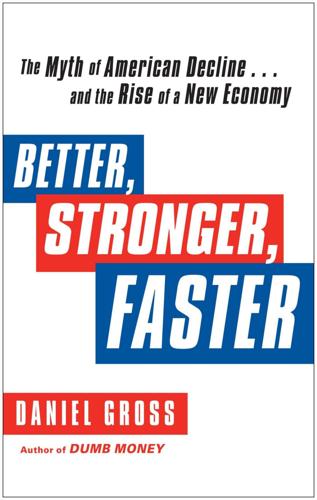
Better, Stronger, Faster: The Myth of American Decline . . . And the Rise of a New Economy
by
Daniel Gross
Published 7 May 2012
These travels have given me a chance to see firsthand many of the trends that are shaping our world. I’ve spent time with oil CEOs in Houston and solar panel makers in Boulder. I’ve visited a Prius factory in Japan and a bustling Chang’an-Ford auto plant in Chongqing, China, gas turbine factories in South Carolina and a business process outsourcing outpost in Bogotá, Colombia. I’ve chatted about the credit crunch with Warren Buffett and Blackstone Group’s chairman Stephen Schwarzman. I’ve toured thriving fish factories outside Saigon, publishing offices in Istanbul, gas stations in Soweto, and an aluminum smelter on a glacial fjord in eastern Iceland.
…
Edwards Deming, the chief evangelist of the gospel of quality, had to go to Japan to find a receptive audience in the 1950s. But after a couple of tough decades in which foreign competition began to erode American advantages, U.S. manufacturers rediscovered efficiency with a vengeance in the 1980s and 1990s. Total quality management, the discipline of reengineering, and the glories of business-process outsourcing transformed the manufacturing industry. In services, Walmart’s insanely efficient supply chains relentlessly drove costs out of the system and set a global standard for rational logistics. McKinsey’s armies of whip-smart technocrats roamed the globe, peddling expensive advice on how to rationalize operations.
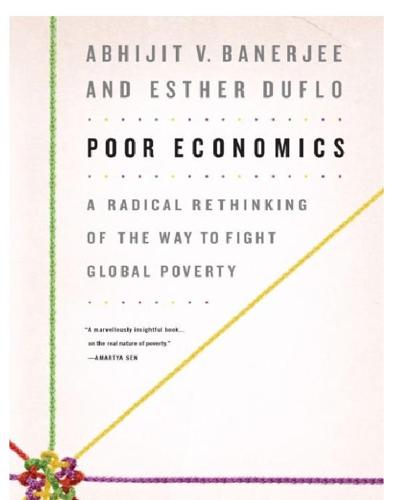
Poor Economics: A Radical Rethinking of the Way to Fight Global Poverty
by
Abhijit Banerjee
and
Esther Duflo
Published 25 Apr 2011
In 2002, Robert Jensen of the University of California at Los Angeles teamed up with some of these centers to organize recruiting sessions for young women in randomly selected villages in rural areas where recruiters would typically not go, in three states in northern India. Not surprisingly, compared to other randomly chosen villages that did not see any such recruiting efforts, there was an increase in the employment of young women in business process outsourcing centers (BPOs) in these villages. Much more remarkably, given that this is the part of India probably most notorious for discrimination against women, three years after the recruiting started, girls age five to eleven were about 5 percentage points more likely to be enrolled in school in the villages where there was recruiting.
…
Banerji, Rukmini Bangladesh Rehabilitation Assistance Committee (BRAC) Bank of America Banking Correspondent Act Bankruptcy Banks problems with Barker, David Basic skills, focus on Basix Becker, Gary Bed nets buying income gain and subsidized Beliefs faith and weak Ben Sedan, Allal Bhopa diseases, doctor diseases and Bloomberg, Michael Bongaarts, John Boyce, Jim Brain process Breast-feeding Bribes Burgess, Robin Business process outsourcing centers (BPOs) Businesses borrowing by investment in poor and Businesses (continued) profits for small/medium starting Calories consumption of production and Capital capitalists without human Case, Anne Castes Casual labor Centers for Disease Control Chattopadhyay, Raghabendra Chavan, Madhav Child mortality Children educated family size and as financial instruments higher-caste/lower-caste income and Chlorin Chlorine Cica Das Citibank Civil liberties Civil society Cohen, Jessica Coimbatore Collier, Paul Common Wealth (Sachs) Community Driven Development Conditional cash transfers (CCTs) Consultative Group to Assist the Poor (CGAP) Consumption Contraception access to availability of Corruption fighting Cortisol Credit Curriculum Dai Manju Das, Jishnu Data Deaton, Angus Debt freedom from Decentralization Decisionmaking family Default rates Demand wallahs Democracy in practice Depression Development economics Deworming Dhaliwal, Iqbal Diarrhea treating Dickens, Charles Diet poor and rich and Discrimination Diseases Doctor diseases, bhopa diseases and Doctors allopatic government private/public Dreze, Jean Drought Dry sand, making Duflo, Esther fertilizer and panchayat survey by Dupas, Pascaline study by Earth Institute East India Company College Easterly,William bed nets and demand wallahs and democracy and poverty traps and on RCT Economic growth Education family size and girls and income and investing in parental interest in poverty and primary quality reengineering remedial secondary value of Education for All Summit (2000) Education policy demand wallahs and supply wallahs and tools of choice in top-down “Efficient household” model Einstein, Albert Elders, caring for Emergency (1975–1977) Emptat, Ibu Entrepreneurs micro- rules of thumb and Entrepreneurship microcredit and poor and problems with rates of return for technologies and Ethnicity Experiment Faith Family extended function of Family planning encouraging Family Planning and Maternal and Child Health Program (FPMCH) Family size education and savings and Farmers insurance and suicide of Farming Fertility control over decrease in income and rates therapies Fertilizer buying using Field, Erica Financial instruments, children as Financial sector Financing Fish sauce Fogel, Robert Food aid availability of budget for consumption of income and prices Food and Drug Administration (FDA) Food prices Foreign aid Foster, Andrew Foundation for International Community Assistance (FINCA) Free markets Fruit and vegetable sellers Funerals, spending on Gandhi, Indira Gandhi, Sanjay Gates Foundation Gibbons, Donna Governments credibility for foreign aid and local problems for Gram Panchayat (GP) Gram Vikas Grameen Bank Green, Donald Green, Jennifer Green Revolution Hammer, Jeff Harlem Children’s Zone Hartman, Betsey Harvest Plus Hatch, John Health free market economists and improving investing in maternal Health care effectiveness of family size and immunizations and learning about overtreatment and problem of spending on Health insurance market for problems with providing Health shocks Health trap Helms, Brigit HIV/AIDS Hope Hospitalization Hunger Hyderabad businesses in schools in survey in Ibu Emptat Ibu Tina shock on fortunes of ICICI ICS Africa Ideology Immunization benefits of health care and incentives for information about rates Immunization camps Income agricultural children and decline in drought and education and fertility and food and growth of illness and malaria and steady/predictable Indian Council of Medical Research Indian Institute of Management Indian Institute of Technology Information collecting imperfect Infosys INPRES Institutional Revolutionary Party (PRI) Institutions bad colonial economic innovation by international manipulating political See also Microfinance institutions Insurance demand for fraud health informal poor and understanding weather Insurance companies, poor and Interest rates poor and International Child Support Intervention education government public supply-side top-down Investments Iodine Iron Iron law of oligarchy Iyer, Lakshmi Jensen, Robert Jobs buying good Johnson, Simon Jolie, Angelina Karlan, Dean KAS, bankruptcy of Kecamatan Development Project (KDP) Kennedy (farmer) Keynes, John Maynard Khanna,Tarun Khetan, Neelima Knowledge Is Power Program (KIPP) schools Kremer, Michael on chlorine dispenser fertilizers and SAFI and Kristof, Nicholas L-shape curve Law Commission of India Learning and Educational Achievement in Pakistan Schools (LEAPS) Learning to Read Lehman Brothers Lei, Miao Levy, Santiago Loans collecting on emergency government-sponsored home-equity home improvement local long-term project mandatory political priorities and poor and problems with repaying London School of Economics Lotteries, business grant M-PESA Macro programs, micro insight for Madiath, Joe Malaria eradication of Malnutrition Malthus,Thomas Maquilladoras Margin, changes at Marginal return Maternal mortality Matlab program Mbarbk, Oucha Medicare Medicine Meillassoux, Claude Microcredit effectiveness of limits of poor/future and Microfinance contracts movement Microfinance (continued) poor and poverty and repayment discipline and Microfinance institutions (MFIs) borrowing from insurance for loans from microcredit and monitoring by poor and subsidizing of successful borrowers and zero default and See also Institutions Micronutrient Initiative Micronutrients Migration Millennium Development Goals (MDGs) Miller, Nolan Miracles, underutilized Modimba, Anna Modimba, Michael Moneylenders MFIs and problems for Monitoring Mor, Nachiket Moral hazards Moyo, Dambisa Mullainathan, Sendhil Munshi, Kaivan Murthy, Narayan National Family Health Survey (NFHS 3) NGOs Nilekani, Nandan Nudges Nurses Nutrition calories and family size and income and obesity/diabetes and poverty traps and pregnancy and Olken, Benjamin Olympic Games, poor countries and Omidyar, Pierry One-child policy OPORTUNIDADES Opportunities Opportunity International Oral rehydration solution (ORS) Organization for Economic Co-operation and Development (OECD) Orwell, George Otieno, Wycliffe Pak Awan Pak Solhin poverty trap and Pak Sudarno Pande, Rohini Parmentier, Antoine Paternalism Paxson, Chris Pensions Performance Pitt, Mark Police Act (1861) Police Reform Commissions Policies anti-poverty developing education food good/bad macroeconomic one-child politics and population social Political economy Politics economics and ethnic good policies and women and Population control Population Council Population growth Population policy Population Services International (PSI) Poverty breaking cycle of decrease in education and eradicating extreme fertility and hunger and microfinance and self-control and Poverty Action Lab Poverty trap education and escaping health-based inverted L-shape and nutrition and S-shape curve and Pradhan Prahalad, C.
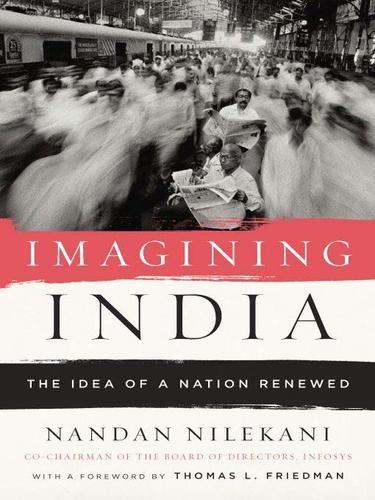
Imagining India
by
Nandan Nilekani
Published 25 Nov 2008
The change was largely driven by the rise of India’s outsourcing industry. The 1990s had marked the rise of Indian IT companies including Infosys, and our key advantage in competing in the global services market—our purple poker chip—has been India’s large numbers of affordable, educated and English-literate workers. In the business process outsourcing (BPO) sector in particular, more than 65 percent of jobs are defined as voice-based jobs, and English-language proficiency is the main requirement for these companies. These firms were closely aligned with global corporations, and both productivity and wages were linked quite closely to global market averages.
…
business, Indian: attitudes towards ; big ; caste system in ; competition in ; entrepreneurship in ; family-owned ; foreign ; government regulation of; licenses for ; management of ; mergers and acquisitions (M&A) in ; profits of; small; state-run ; supply chains of ; transparency in ; younger generation in business process outsourcing (BPO) Business Standard Calcutta Calcutta Municipal Corporation Calcutta Tramways Calcutta University Calico Act (1701) Caltex Calypso Foods canals cancer “cap and trade” system capitalism carbon emissions carbon-pricing systems carbon taxes Caste, Class and Power (Béteille) caste certificates Center for Science and Environment (CSE) Center of Indian Trade Unions (CITU) Center of Policy Research (CPR) Central Intelligence Agency (CIA) CENVAT Chak de India Chancellor, Richard Chanda, Nayan Chandigarh Chandni Chowk Chandra, Kanchan Chandrasekhar, S.
…
CEO Forum Industrial Development and Regulation Act (1951) Industrial Revolution infant mortality rates inflation information technology (IT); acceptance of; in agriculture ; in banking ; caste identification and; computers in ; economic impact of ; education and ; for energy sources; entrepreneurs in; for environmental issues; “gatekeepers” eliminated by ; in global economy ; government policies on ; growth of ; for health care ; identity cards supported by; Internet access of ; investment in ; jobs created by ; kiosks for ; for land records, ; low-cost approach of; outsourcing of; see also business process outsourcing; paperwork eliminated by; political applications of; poverty alleviated by ; for railroad schedules ; for retirement funds ; in rural areas ; for social services; for stock exchanges ; for taxation; technological revolution in; in telecommunications ; in urban areas ; for voting ; see also software industry Infosys Technologies Institution for Human Settlements insurance industry Insurance Regulatory Authority of India (IRAI) Integrated Energy Policy interest rates Intergovernmental Panel on Climate Change (IPCC) International Food Policy Research Institute International Monetary Fund (IMF) International Water Management Institute International Year of the Aged Invest India Foundation investment, capital Iran Ireland iron irrigation ISO 9000 certifications Israel Ivory Coast Iyengar, Haravu Raj Jaffrelot, Christophe Jain, L.

The Blue Sweater: Bridging the Gap Between Rich and Poor in an Interconnected World
by
Jacqueline Novogratz
Published 15 Feb 2009
A doctor friend of Satyan’s replied that open defecation was one of the biggest public health issues the area faced, reminding us that some health investments are best undertaken through effective awareness campaigns, not through medicines or direct services. Against this backdrop, we sat in a circle under tall green trees outside Satyan’s childhood home, cows lolling in the distance. Satyan pulled out his computer to show us the work he was doing to establish a business processing outsourcing (BPO) unit here. Already, he’d secured wireless, and sure enough, in this tiny village so far away from everything, we were able to check my e-mail and read the New York Times. Inside a small house, six young men sat inputting data for a bank in Delhi, all earning more than they had ever dreamed they could.
…
See Blue bakery Banks, 7, 268 Bartering, 65–66 Bassani, Bilge Ogun, 39–40, 53 Beatrice (Jamii Bora member), 273–74 Biko, Stephen (Steve), 101 Bill and Melinda Gates Foundation, 264, 270 Bilo (Kenyan security guard), 92 Blackwell, Angela Glover, 154–55 Blackwell, Unita, 159–60 Blue bakery accounting and accountability problems of, 79–80 Consolata and, 75, 78–81, 81 expansion of, 87 financing, 75–76 founding of, 72–76 Gaudence and, 75, 80–81, 85–86 growth of, 79, 82–83, 87–88 Honorata and, 73–77, 78 Josepha and, 75, 83, 86 legacy of, 164 lessons learned from, 86, 88 messages of, 88 painting building of, 85–86 postgenocide, 163–64 Prisca and, 74–78, 79–85, 88 Prudence and, 72 quality control and, 88 sales tactics of, 78–79, 80–81 setbacks of, 83, 86–88 success of, 113 Blue sweater story, 1–3, 272 Bohri woman, 236–37 Boniface (Rwandan driver), 37–39, 42, 47, 64–67, 72, 78–79, 83, 86, 106–7, 163 BPO, 233 Brazil, 7–8 Bride price, 62–63 Bright, Rita, 156–57 Brown, Tim, 230 Buddha, 146 Buffet, Warren, 284 Burundi, 13, 51 Business processing outsourcing (BPO), 233 Buxbaum, David, 220, 226 C Cambodia, 144–45 Capitalism, future of, 136 Carnegie, Andrew, 143 Catfish factories (Mississippi Delta), 159–61 Catherine (Acumen Fund fellow), 278 Cesare (Rwandan doctor), 90 Charity, traditional, 76, 151, 211, 218, 228–29 Charles (Novogratz’s friend), 84–85, 108–10, 113, 120–25 Charlotte (restaurant proprietor), 205–7, 262 Chase Manhattan Bank, 5–7, 11, 56, 64 Chloroquine, 255–56 Choices, 115 Chowdhury (Indian guide), 118–19, 267 Churchill, Winston, 17 Cisco Foundation, 217, 220–21 Cissy (Ugandi woman), 17–19 Citibank, 238 Citizens Foundation, 280 Collaboration, 280 Collette (Honorata’s mother), 167–68, 174–75 Colombia, 158–59 Committee decision making, 139 Community and community work, 4, 55, 284 Consolata (blue bakery worker), 75, 78–81, 83 Constance (Rwandan parliamentarian), 46–49, 63–64 Conviction, 284 Conway, Sir Gordon, 213–14 COOPEDU (credit union), 206 Corruption, 98–99, 184, 211–12 Cost of Good Intentions, The (report), 148–49, 151 Cote d’Ivoire, 15, 19–28, 63 Cry Freedom (film), 101 D Dalit caste, 247 Damascene (office assistant), 112 Dativa (bank executive director), 203 Davidson, Stuart, 215–17 Democracy, attempts to impose, 187–88 Dhammayietra (pilgrimage), 144–45 Dieu Donne (Zairean artist), 57, 126, 204 Discipline, 272 Diversity, 154–55, 188 Doctors without Borders, 171 Dot-com boom, 213, 217 Drayton, Bill, 214–15 Drip irrigation projects, 247–51 Drishtee, 231–33, 275 Duncan (engineer), 131–32 Duterimbere.

Tomorrow's Lawyers: An Introduction to Your Future
by
Richard Susskind
Published 10 Jan 2013
There may not be a tipping point, but we are likely to witness a significant upsurge in new competition for law firms. Additionally, in this second stage, law firms and in-house departments will find ways of running their own back offices (technology and accounts, for example) at far lower costs. This could be through business process outsourcing or shared services facilities. And there is also likely to be a shift in this second stage towards greater investment by in-house legal departments in legal needs analysis and legal risk management. Owners and leaders of businesses will want to have a far clearer sense of what are the urgent and unavoidable legal expenses and may confine their legal spend to these alone.
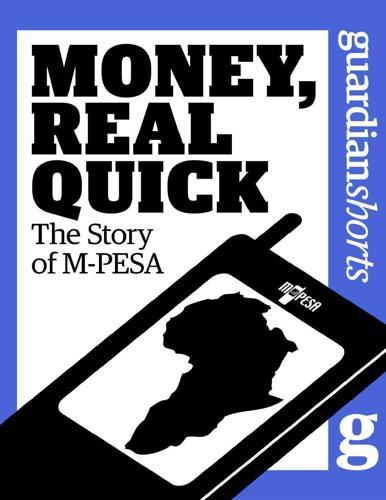
Money, Real Quick: The Story of M-PESA
by
Tonny K. Omwansa
,
Nicholas P. Sullivan
and
The Guardian
Published 28 Feb 2012
It started with electronics shops selling and repairing phones, morphed into software developers working on their own to develop apps to build a better platform, and now has the full support of the Kenyan government as it looks to foster IT as a pillar for future economic growth. The government, with support from the International Finance Corporation (IFC) of the World Bank, is constructing a sprawling 5,000-acre technology park (Malili Technology Park) to promote BPO (business process outsourcing) as well as content and app development. “The ICT revolution is starting to connect to other sectors and starting to influence the old economy and causing an enormous amount of growth,” says Wolfgang Fengler, lead economist at the Nairobi office of the World Bank. A key focal point for new startups is iHub (“innovation” Hub) in Nairobi, co-founded by Eric Hersman, also the co-founder of Ushahidi.
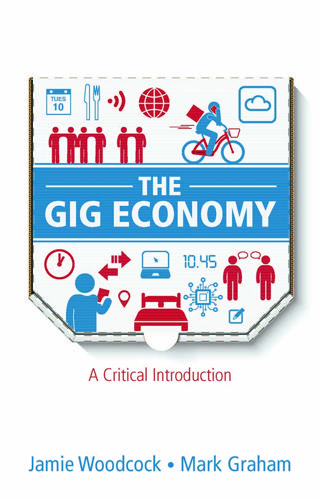
The Gig Economy: A Critical Introduction
by
Jamie Woodcock
and
Mark Graham
Published 17 Jan 2020
Globalization and outsourcing The final precondition that has deeply shaped the gig economy in its current form is a combination of political economy and technology: the effects of globalization and outsourcing. This is a development and intensification of the outsourcing of call centres from high-income countries to low- and middle-income countries, for example, from the UK to India (Taylor and Bain, 2005). This laid the organizational basis for wider business process outsourcing that has become today’s online outsourcing. However, globalization has not only meant the shifting of work and trade to different parts of the world, but also brought about a generalization of what Barbrook and Cameron (1996) have termed the ‘Californian Ideology’, referring to the encouragement of deregulated markets and powerful transnational corporations.
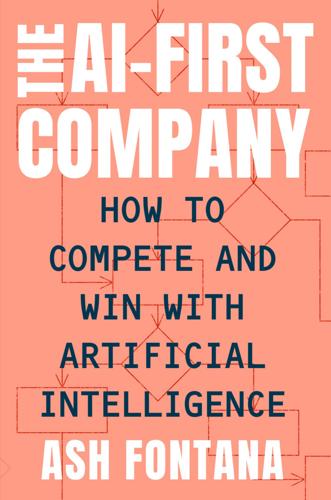
The AI-First Company
by
Ash Fontana
Published 4 May 2021
However, outsourced operations can be cheaper than insourced operations, thanks to the tools they build for their labelers or the rates they negotiated with workers. Companies tend to experiment with both insourcing and outsourcing, achieving a balance over time, depending on their labeling needs. Outsourcing can take many forms. There are consulting firms, business process outsourcing firms, and others that will create custom labeling operations with associated expenses and margin for them. On the other hand, there is a burgeoning crowdsourcing industry in which individuals work for a small fee on a per-task basis. The aforementioned Mechanical Turk and Upwork are examples of marketplaces for task-based labor.

The Global Auction: The Broken Promises of Education, Jobs, and Incomes
by
Phillip Brown
,
Hugh Lauder
and
David Ashton
Published 3 Nov 2010
Within a major American bank, there was no strategy to shift jobs to India from New York or elsewhere within the group, but a discussion between senior staff in Mumbai and sponsors in New York led to a “handshake for a few operations jobs.” This was in 2002, when the company began engaging in a number of pilot projects in response to increasing cost pressures. The experiment with back-office functions reflected the growth in offshore call centers and business process outsourcing (BPO). There was little point using staff in New York or London to process invoices or very basic data-entry jobs when it could be done in real time in India or Vietnam at a fraction of the price. Although the company was in the early stages of developing wealth management and investment banking within the country, there was rapid growth of the middle office that includes research and analytical jobs for its New York and London offices.

The Globotics Upheaval: Globalisation, Robotics and the Future of Work
by
Richard Baldwin
Published 10 Jan 2019
A third way AI automation is creating jobs in rich nations is by reshoring back-office jobs that had been offshored to countries like India. The idea of replacing high-cost workers doing routine manipulation of information that can be sent down a wire is an old one. Since the 1990s, many companies have sent these jobs overseas. This created a whole industry called business process outsourcing (BPO) that is today dominated by companies like Infosys. RPA is good at many of the tasks that BPO companies now do. The cost savings are almost coercive. According to Genfour, which was acquired by Accenture in 2017, “While an onshore FTE [full-time equivalent worker] costing $50K (total cost) can be replaced by an offshore FTE for $20K, a digital worker can perform the same function for $5K or less—without the drawbacks of managing and training offshore labor.”14 Since the AI software cannot handle all cases, bringing back-office jobs back to America and Europe will create some jobs for white-collar humans along with lots of jobs for white-collar robots.

Digital Bank: Strategies for Launching or Becoming a Digital Bank
by
Chris Skinner
Published 27 Aug 2013
Talk to anyone and they define it different ways and, in all of this confusion, the decision maker is left confused. Nevertheless, we are moving from a world of finance where technology was core to efficiency in its first wave, and differentiation was core in its second. Initially, mainframe compute power and then Business Process Outsourcing (BPO) and virtualisation created efficient computing capabilities for financial firms. Then the ease of modular computing, service-oriented architectures and Ajax Web 2.0 has made computing applications the differentiating factor between a winning bank and an also-ran bank. Now we are moving to an age where computing and applications just don’t matter.

The Age of Stagnation: Why Perpetual Growth Is Unattainable and the Global Economy Is in Peril
by
Satyajit Das
Published 9 Feb 2016
A pair of trousers could be made using yarn spun in Bangladesh that was then woven into fabric and dyed in India, China, or Vietnam; the zipper might be manufactured in Japan and the buttons in China; and the whole could be stitched together in Sri Lanka, Pakistan, or Honduras. Each stage was undertaken in the most efficient location, with businesses and nations embracing a transnational system of production. Firms aggressively sought competitively priced raw materials, labor, and locations. With the ubiquitous call centers and processing hubs, business process outsourcing and multinational manufacturing became the norm. The reintegration of China, India, Russia, and Eastern Europe into the world economy increased the global labor pool from approximately 1.5 billion workers to nearly 3 billion. Costs fell as businesses relocated production to the cheapest locations.
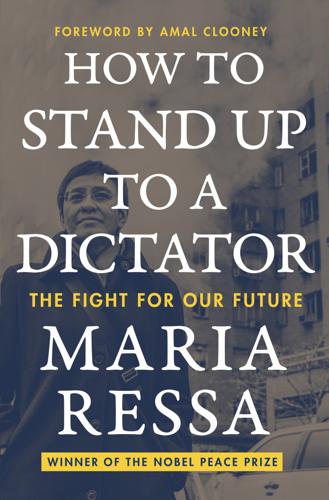
How to Stand Up to a Dictator
by
Maria Ressa
Published 19 Oct 2022
A former colony of the United States, the Philippines’ nearly 113 million people10 boasted of an English-speaking, often college-educated, labor force familiar with Western culture. That’s one reason why our country has long been a source of cheap labor for the West. In 2010, the Philippines overtook India as the world’s top call center, business process outsourcing (BPO), and shared services hub.11 More significantly, we became a prime source of internet scams, from the days of Hotmail and email spam. Many foreign businesses experimenting in gray areas came to the Philippines because it had few or no internet regulations, and what regulations it did have, it didn’t enforce.12 Some parts of the Philippines developed a reputation for services euphemistically known as “onlining” that spammed email addresses around the world.13 Our country was also where the hate factory 8chan, later 8kun, best known as a forum for violent extremists, was based and later linked to QAnon: the American father and son suspected of creating it had been living on a pig farm south of Manila.14 A lot of that changed after a global crackdown between 2010 and 2012, when internet security researchers and law enforcement agencies dismantled spambots and technology evolved to control them.
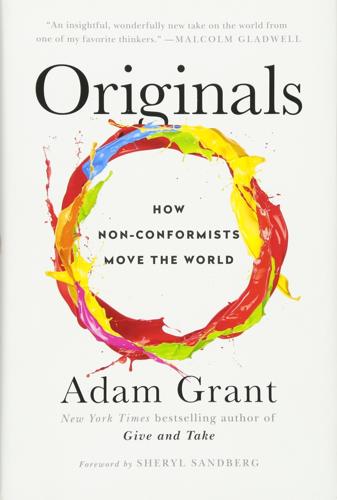
Originals: How Non-Conformists Move the World
by
Adam Grant
Published 2 Feb 2016
Hofmann, “Reversing the Extraverted Leadership Advantage: The Role of Employee Proactivity,” Academy of Management Journal 54 (2011): 528–50. companies in India: Sucheta Nadkarni and Pol Herrmann, “CEO Personality, Strategic Flexibility, and Firm Performance: The Case of the Indian Business Process Outsourcing Industry,” Academy of Management Journal 53 (2010): 1050–73. evaluated their strategies at the midpoint: Anita Williams Woolley, “Effects of Intervention Content and Timing on Group Task Performance,” Journal of Applied Behavioral Science 34 (1998): 30–46. the midpoint of a task: Connie J.
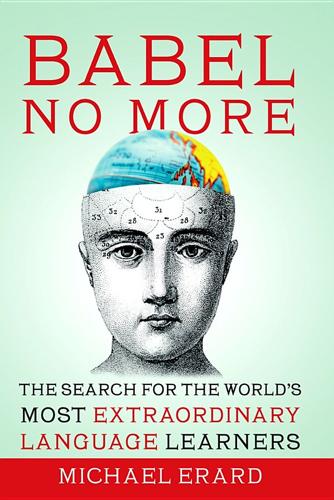
Babel No More: The Search for the World's Most Extraordinary Language Learners
by
Michael Erard
Published 10 Jan 2012
Because Indian languages don’t have the z, the word is pronounced “soo” (in the south) or “joo” (in the north). This sort of native inflection can keep people from getting jobs in the booming call-center industry in Hyderabad and Bangalore, two huge, bustling cities that are home to high-tech companies and the “business process outsourcing” industry. Eapen’s school was one of dozens teaching the “soft skills”: team building, negotiation, and English pronunciation. Students were paying him 6,000 rupees (about $126 US) to help them neutralize their accents in English; he himself has a crisp British accent, which he honed working in Kuwait and Dubai.
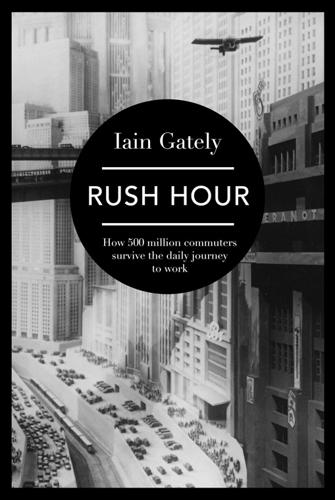
Rush Hour: How 500 Million Commuters Survive the Daily Journey to Work
by
Iain Gately
Published 6 Nov 2014
Advocates of virtual commuting overlooked the impact of globalization on their dream, and its unintended consequence of outsourcing, in the sense of sending jobs overseas. Employers in both the EU and the USA, obedient to the letter if not the spirit of pro-telework legislation, decarbonized (and gave their ex-workers more social time) by Business Process Outsourcing (BPO), i.e. relocating their call centres and sundry other corporate functions to Asia. In consequence, a Westerner looking to telecommute in their own country would be best advised to emigrate to India, Mexico, Bangladesh or some other developing nation, where literacy is high and talk is cheap.

The Measure of Progress: Counting What Really Matters
by
Diane Coyle
Published 15 Apr 2025
In 2022–2023, exports of software services were valued at US$185.5 billion (18.4 per cent year-on-year growth). This has grown from US$62.6 billion in 2012–2013 and US$108.4 billion in 2017–2018 (Reserve Bank of India 2023). The two largest components within this are IT services ($119.8 billion) and business process outsourcing (BPO) services ($51.2 billion). The major destinations were the United States (55 per cent) and E urope (31 per cent). Total service exports for India in 2022 were US$309.37 billion, while total exports were $778.55 billion (World Bank 2023). Companies in Brazil and Poland as well as India specialise in the design and engineering drawing stages of the construction industry (Coyle and Msulwa 2024).
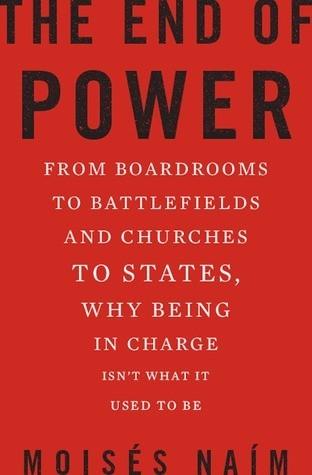
The End of Power: From Boardrooms to Battlefields and Churches to States, Why Being in Charge Isn’t What It Used to Be
by
Moises Naim
Published 5 Mar 2013
It breeds skepticism and mistrust of any authority, and an unwillingness to take any distribution of power for granted. One of the best examples of all three revolutions simultaneously at work is the Indian outsourcing industry. Young, educated Indians who belong to the country’s burgeoning middle class have flocked to work at urban call centers and other business process outsourcing (BPO) companies, which in 2011 generated $59 billion in revenue and directly and indirectly employed almost 10 million Indians.39 As Shehzad Nadeem observed in Dead Ringers, his study of the impact of Indian call centers on their workers, “The identities and aspirations of the ICT [information and communications technology] workforce are defined increasingly with reference to the West. . . .
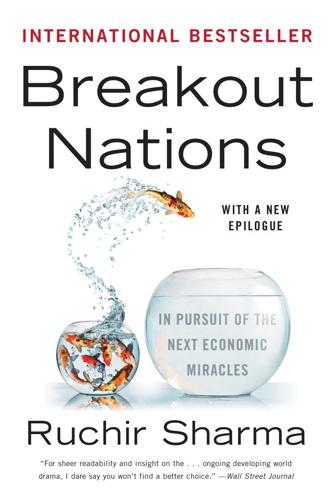
Breakout Nations: In Pursuit of the Next Economic Miracles
by
Ruchir Sharma
Published 8 Apr 2012
That’s a very high urbanization rate for a nation with an average income of only $2,500, and because the concentration of people and business drives growth, it’s a big economic plus. The Philippines also has some basic advantages over Indonesia—including a well-educated English-speaking population. For three decades it squandered those advantages, but there are signs of a turnaround, the most dramatic being the rise of the Philippines as a rival to India in “business process outsourcing”—the industry that provides the operators who answer calls for customer service at almost any major global company. Call centers did not exist in the Philippines a decade ago, and now it’s a $9 billion industry employing 350,000 people. These centers are starting to open outside metro Manila and pop up all over the islands of the Philippines, to the point that some analysts think it may turn into another successful case of Southeast Asian archipelago capitalism.
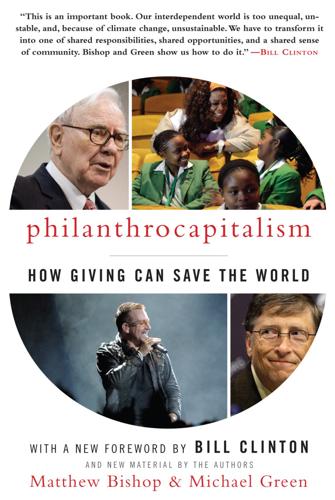
Philanthrocapitalism
by
Matthew Bishop
,
Michael Green
and
Bill Clinton
Published 29 Sep 2008
Will they have the humility to listen to others who have been grappling with these problems for far longer? Will they be willing to learn from their mistakes? Will they stick at it when the going gets tough? A FEW MILES from the proliferating skyscrapers of Bangalore, the center of India’s booming high-tech business-process outsourcing industry, is a camp of metal huts housing the families of laborers who have come from far-off villages to work on the city’s many construction sites. A bright yellow bus stops in the dirt square, and immediately it is surrounded by about thirty children, aged four to ten. Once on board, they sit—three per screen—by computers where specially developed software teaches them language and mathematical skills.

The Coming Wave: Technology, Power, and the Twenty-First Century's Greatest Dilemma
by
Mustafa Suleyman
Published 4 Sep 2023
Working on a zero-hours contract in a distribution center doesn’t provide the sense of pride or social solidarity that came from working for a booming Detroit auto manufacturer in the 1960s. The Private Sector Job Quality Index, a measure of how many jobs provide above-average income, has plunged since 1990; it suggests that well-paying jobs as a proportion of the total have already started to fall. Countries like India and the Philippines have seen a huge boom from business process outsourcing, creating comparatively high-paying jobs in places like call centers. It’s precisely this kind of work that will be targeted by automation. New jobs might be created in the long term, but for millions they won’t come quick enough or in the right places. At the same time, a jobs recession will crater tax receipts, damaging public services and calling into question welfare programs just as they are most needed.
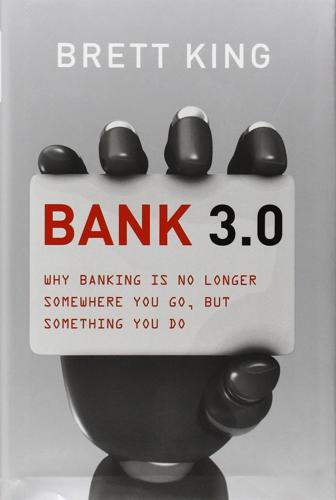
Bank 3.0: Why Banking Is No Longer Somewhere You Go but Something You Do
by
Brett King
Published 26 Dec 2012
Big data sizes are a constantly moving target, and as of 2012, range from a few dozen terabytes to many petabytes of data in a single data set. Bitcoin: A type of P2P digital currency. Blog: A contraction of the term “web log”—a type of website usually maintained by an individual with regular entries of commentary, descriptions of events, or other material such as graphics or video. BPO: Business Process Outsourcing—the practice of outsourcing some or all of the business’s back-office processes to an external company or service provider; common with call centres and IT support. BPR: Business Process Re-engineering—re-engineering business processes to either reduce costs or improve the flow of a process for customers.
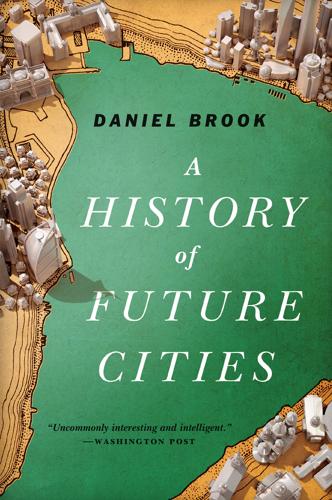
A History of Future Cities
by
Daniel Brook
Published 18 Feb 2013
Hindu-Muslim tension had long plagued India, but in the new world of Bombay, as the English-speaking globalized elite pulled away, enjoying Western consumer goods like computers that cost more than they paid their maids and drivers in a year, the tensions became especially acute. Frustrations simmered in the chawls where lifelong jobs in the unionized mills and formerly state-owned enterprises were disappearing. Laid-off industrial workers invariably lacked the English skills needed for the new business process outsourcing jobs that soon multiplied as Western multinationals sent back-office work to the cheapest English-speaking workforce on earth. Once organized as industrial workers into unions affiliated with various left-wing political parties, working-class Bombayites were now organized along ethnic and religious lines into criminal gangs and political parties that often crossed the line into being hate groups.

The Future of the Professions: How Technology Will Transform the Work of Human Experts
by
Richard Susskind
and
Daniel Susskind
Published 24 Aug 2015
Stepping forward instead are data scientists, process analysts, knowledge engineers, systems engineers, and many more (see Chapter 6). Today, professionals still provide much of the content, but in time they may find themselves down-staged by these new specialists. We also see a diverse set of institutions entering the fray—business process outsourcers, retail brands, Internet companies, major software and service vendors, to name a few. What these providers have in common is that they look nothing like twentieth-century doctors, accountants, architects, and the rest. More than this, human experts in the professions are no longer the only source of practical expertise.
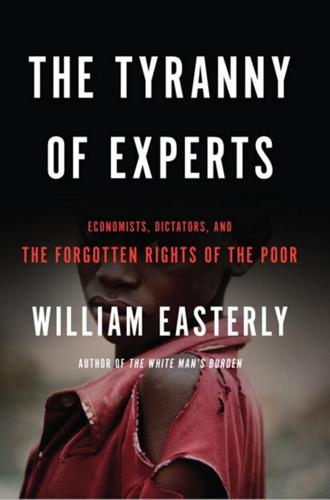
The Tyranny of Experts: Economists, Dictators, and the Forgotten Rights of the Poor
by
William Easterly
Published 4 Mar 2014
University of California at Berkeley researcher Kentaro Toyama cites surveys that show when a village gets hooked up to the Internet on a PC, “the dominant use is by young men,” who are “playing games, watching movies, or consuming adult content.”3 On the other side of the ledger, India’s IT industry has captured 35 percent of the world market for business-process outsourcing while India ranks 114th in the world in average Internet connection speed.4 Wiring the world to end poverty overlooks how many less-faddish technologies are still lacking among the poor. The development audience gets excited about farmers in a remote but wired village finding out prices in real time for their crops.
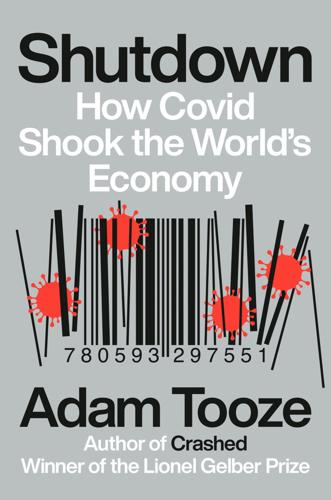
Shutdown: How COVID Shook the World's Economy
by
Adam Tooze
Published 15 Nov 2021
In the UK, the crisis exposed the fact that 9 percent of children did not have a computer, laptop, or tablet at home.14 According to UNICEF, more than two-thirds of children worldwide were without access to home internet connections—830 million young people.15 In India, the IT and outsourcing industry struggled to adjust. Employees often lacked home internet connections, and tight security rules demanded by Western clients limited remote working. High-end software developers set up secure connections for their staff. The business process outsourcing (BPO) industry with its 1.3 million workers resorted to arguing that their operations belonged to the essential financial service industry and were thus exempt from the lockdown.16 Western clients, facing an avalanche of complaints about long wait times, were only too happy to endorse the claim.

Worn: A People's History of Clothing
by
Sofi Thanhauser
Published 25 Jan 2022
Although it is nicknamed the Manchester of India, neither Coimbatore nor its surrounding countryside evoked the North of England. Orange-flowering Gulmohar trees lined the road, along with spiky trees in the juniper family, full of thorns that the local goats cleverly ate around. Farther back from the road, the landscape was lousy with engineering colleges. The prospect of jobs in local BPOs (Business Process Outsourcing firms) incited parents here to sell their possessions in order to send their children to engineering schools, Sivanpillai said. In fact, the engineering colleges had become such a boom industry, and so many had been built, that the colleges had to send recruiters to other states to find students to fill their nearly empty classrooms.

Rentier Capitalism: Who Owns the Economy, and Who Pays for It?
by
Brett Christophers
Published 17 Nov 2020
The specialist is BAE Systems (see also Chapter 3), a defence, security and aerospace contractor, primarily for the public sector. The generalists are two companies we have previously encountered: Serco and Capita, the latter gloriously described by Joel Benjamin as ‘the Vampire Squid of business process outsourcing, its money grabbing tentacles extending through every layer of Government, from pensions to council finance, from parking and congestion charges to NHS GP primary care support, funeral services, and even the privatised food safety agency’.50 I have already identified some of Serco’s main contracts.

Ghost Train to the Eastern Star: On the Tracks of the Great Railway Bazaar
by
Paul Theroux
Published 9 Sep 2008
On my trip of 28,000 miles and hundreds of encounters, I met two people who supported the American president: the man in Baku who wanted the United States to invade Iran, and Rajendra. No one else. Everybody in India – and in the States too – talked about outsourcing. India was making shirts and shoes and electronics, and the growth areas were IT (information technology), BPO (business process outsourcing) and KPO (knowledge process outsourcing). These were labour-intensive businesses that had helped swell Mumbai to its present size of twenty million, overfilled its trains with commuters, packed its hotels and restaurants, and impelled developers to look at Dharavi slum as a property development opportunity.